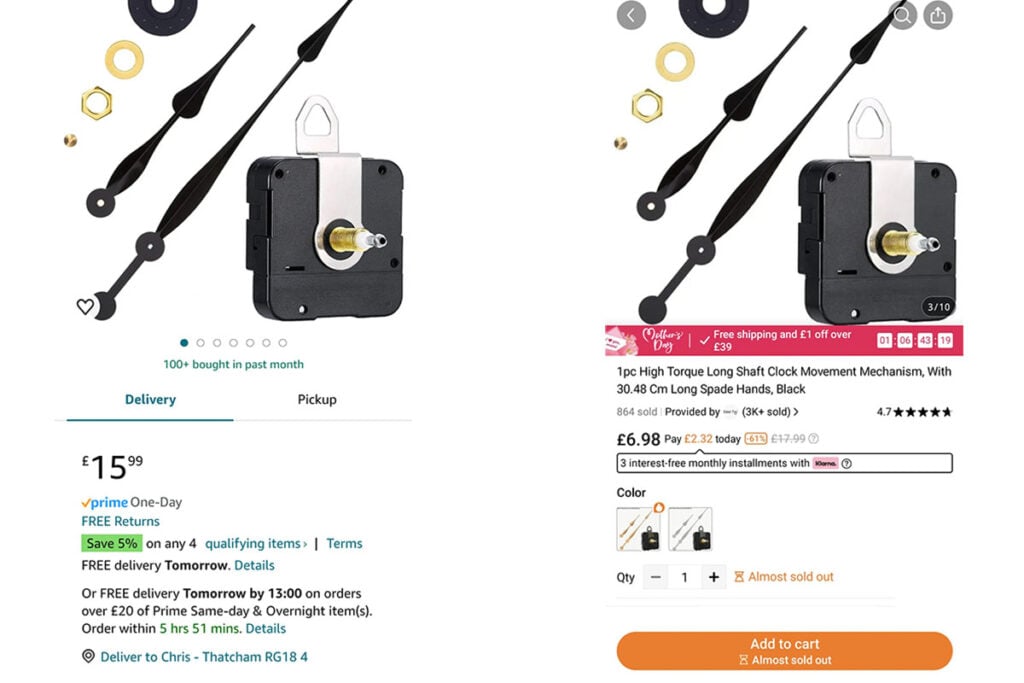Temu has become a shopping phenomen, but why do people shop on Temu is perhaps one of the most important questions ecommerce professionals should be asking and what is the impact for the entire retail world?
Temu reputation
Temu has a reputation for, what it’s hard to phrase other than how a friend put it, ‘cheap Chinese crap’. But that masks the real power of the marketplace. Yes, there are many products on Temu made of plastic and designed to make you think “I need one of those in my life” and “It’s only a couple of quid”, and generally made of plastic, so you go ahead and make a purchase. You’ll receive something that is largely ok, pretty much as described and then you’ll use it once and it’ll languish away in a drawer gathering dust. You may wonder why you bothered to purchased it, but it won’t stop you going back for more because every now and again you’ll buy something that turns out to be fantastic that you love!
Price vs service
But it’s for products you actually want where the reason that people shop on Temu starts to make sense. Take the image above – two identical clock mechanisms from undoubtedly the same factory with the same product photos and very similar titles and descriptions. On Amazon you can have it tomorrow at a cost of £15.99, but on Temu you can have it in about 10 days time at a cost of £6.98. That’s a massive saving for the sacrifice of fast delivery, for something you probably don’t really really need tomorrow anyway.
And for just about any product that’s relatively lightweight and easy to ship, Temu is a reasonable alternative to Amazon unless you are in a hurry and the price differentials are staggering. Take Christmas, we all know it’s coming on the 25th of December, so if shoppers get their act together and plan ahead, everything from gift tags to ribbons are exactly the same on Amazon, eBay and a raft of other sites, and they’re also available on Temu for less than half the price.
Temu strategy
What Temu are doing, is going to the Chinese manufacturers and saying “Hey, you’ve got spare capacity, we can sell your stuff for you, direct to the consumer, and cut out the middle man.” Sure it’s entirely unsustainable with everything shipped via air instead of sea container, but if you want to know the answer to why do people shop on Temu it’s because of the price.
The real disruption won’t be to marketplaces like eBay and Amazon. eBay are already shying away from low-cost low-quality Chinese products with pushes in luxury authenticated, refurbished, preloved and auto-parts. Amazon are there for when you want branded goods in a hurry. The sector that’s in danger are those merchants relying on Chinese products, regardless how they source them, who now not only face devastating competition on the likes of Amazon but now additional competition from consumer spend on Temu.
With Temu’s stated aim to allow US and European brands and retailers to sell on their platform later this year, it’s going to be very difficult for any merchants selling products similar to those already on the platform to gain any traction. Those with unique respected brands may find success… if they are willing to sell on Temu which has yet to be seen. But those same brands were once reluctant to sell on eBay and Amazon but over the years they’ve changed strategy and adopted Western marketplaces as that’s where their consumers shop.
So when you ask why do people shop on Temu, brands need to start asking when they’ll start to sell on Temu and strategise to sell higher-value higher-quality products on a marketplace known for being cut price. Merchants selling essentially unbranded or white label mass produced products will sadly find they’re unsuccessful as their manufacturer is probably already on Temu and have cut out the retailer and distributor margins and happily adopted a D2C model.
Temu isn’t just another marketplace, they have the potential to entirely disrupt the current ecommerce model and if you are to survive the fight will be much greater than Chinese sellers competing on your turf. It’ll be D2C manufacturers cutting you out of the supply chain entirely.










